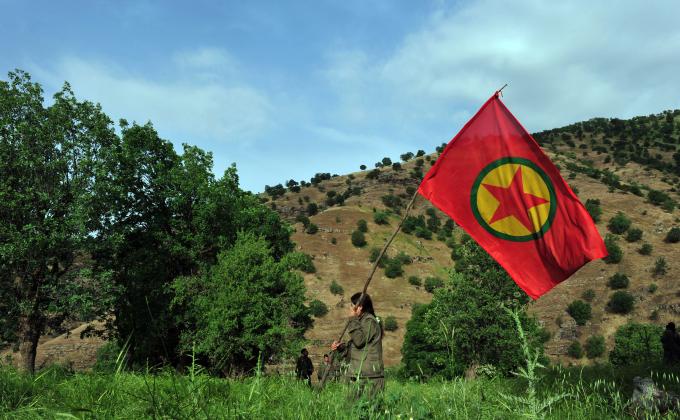Pity the timorous UK government, beset by insecurities and desperately seeking to allay them. As for the official responses, not enough is the extensive anti-terrorism legislation set out in the Terrorism Act 2000 and later legislation. Not enough is the more recent counteraction against ‘hostile activity’ or ‘foreign activities and foreign influence’, terms encompassing not only Russian or Iranian agents but also shady political and industrial influencers. Hence, the Counter-Terrorism and Border Security Act 2019, Schedule 3, and the National Security Act 2023, Part 4, have been instituted as further layers of the official comfort blanket. Yet, the state still feels the chill from “extremism”. The delineation of that mischief, let alone the reply, has proven even more troublesome than the other two responses. At least for “terrorism”, section 1 of the Terrorism Act 2000 has grounded a workable and steadfast meaning with minimal strain in its application to thousands of arrests, searches, and prosecutions. The 2019 and 2023 Acts are, to date, untested in practice. By contrast, “extremism” has been subjected to recurrent official policy-making since 2006, termed here a “policy spiral”. The latest twist was applied in March 2024, when a new definition of extremism was pronounced for observance by officials in central government departments. According to the Government’s “Principles of Engagement”, external engagement can strengthen democracy, policy-making, our society; but official contact with those who demonstrate extremism will have the opposite effect and so should be avoided. However, if the policy about extremism is ineffective or unfair, even if it is confined to administrative rather than criminal consequences, then further damage will result to the values to be secured.
This paper will explain and assess the travails of UK extremism policy. The policy has emerged incrementally and largely without any legal basis, so it is important as a first step in this paper to set out the latest development in its historical context, the origins of which go back to 2006. Once the far-from linear waypoints have been plotted since then, the policy of 2024 can be examined in detail in terms of both its meaning and its implications and impacts. Some conclusions and overall suggestions for comprehending the UK government’s intentions complete the paper.
The spiralling history of UK extremism policy
A policy spiral depicts repeated or even endless policy cycle sequences involving unremitting agenda-setting, policy formulation, decision-making, implementation, and evaluation. The policy cycle notion here highlights deficiencies in “extremism” policies, which suffer destabilisation into a “policy spiral” in two ways. The first is that each policy stage lacks internal stability. Second, there is turbulence between policies, in this case, extremism and terrorism, because of the broad language and uncertain boundaries of each sector.
In the case of extremism, the policy spiral was set in motion with the unveiling of the “Prevent” policy in 2006, a bold initiative within the CONTEST strategy. Prevent involved engagement with individuals, localities, and national features (such as the internet) at risk of falling prey to extremist mindsets from which terrorist acts might flow. A battle of ideas should be waged, with the assumptions that adherence to extremism can be cured (by desistance from action if not ideological disavowal) and that the state’s quest for Prevent will be reciprocated as a common purpose by affected families and communities.
The first phase of Prevent, from 2006 to 2011, was non-legal and diffuse. No concept of pre-terrorist “extremism” then emerged beyond a plea to observe “British values”. As a result of the vague and ungrounded policies at this stage, problems arose in terms of uneven application and compliance (with some localities hostile to any involvement) and also much confusion with broader policies of community integration and assistance. Monitoring and accountability were also lacking, so localities were tempted to use Prevent to cover funding shortfalls for other projects, and even some extremist organisations and individuals were funded and supported as experts in jihadi ideology and radicalisation, though no specific bans were issued. Consequently, cumulative criticisms of conception and performance triggered reviews in 2011 by the Home Office and Lord Carlile. Some bare detail was then added to the promotion of “British values” which were deemed to include democracy, the rule of law, individual liberty and mutual respect and tolerance of different faiths and beliefs, as well as refraining from calls for the death of British soldiers.
In the second phase, post-2011, this reincarnation of Prevent remained relatively indistinct and wholly unenforceable. In a further response, the step was taken to turn Prevent into a statutory duty for various local authorities under the Counter Terrorism and Security Act 2015, Part 5. The reform aided enforceability, but the extent of the statutory duty remained circumscribed. The Channel Programme (“Support etc for people vulnerable to being drawn into terrorism”) was specified in sections 36-41 as mandatory for local authorities and police. However, most aspects as to challenging ideologies that support terrorism and activities by sectors and institutions where there are risks of radicalisation were still left to exhortation via the considerable volumes of soft guidance then issued by the government. Nothing more was ventured about the 2011 meaning of “extremism”, and so it took court intervention to adjudge the working concept of extremism to be inadequate. In R (Salman Butt) v Secretary of State for the Home Department, the High Court held that guidance to further and higher education institutions concerning partnership approaches, risk assessments, action plans, staff training, IT policies, regulation of student unions and societies, monitoring and enforcement as well as the vetting of external events and speakers (such as the claimant) should be understood as applying only to extremism creating a risk of violence.
At this very juncture when “Prevent” was undergoing an evolution, an overlapping policy spiral emerged around “counter extremism”, which began without delineation or demarcation from Prevent. Justifications for a distinct counter extremism policy cycle and the supposed gains from a pre-pre-terrorism policy lacked articulation. The published origins began in 2013 when a feeble short paper, Tackling Extremism in the UK, was promulgated against “Islamist extremism” (the prime concern of Prevent). Later, the outlines for a Counter-Extremism Bill were announced in 2015, including banning, disruption, and closure orders. No definition of extremism was offered much beyond the Prevent 2011 version, and no draft Bill was actually tabled, despite promises in 2015 and 2016. These fumbling initiatives were denounced by the Parliamentary Joint Committee on Human Rights in 2016: “The Government gave us no impression of having a coherent or sufficiently precise definition of either ‘non-violent extremism’ or ‘British values’.” The judiciary again intervened and delivered another definition in Shakeel Begg v BBC, a libel action by the chief Imam at Lewisham Islamic Centre who had been depicted as an extremist. The judicial foray was confined to “Islamism” and pointed to ten indicators of “extremism”, some very vague (such as a “Manichean” world view) and some illiberal (such as advocating civil disobedience or espousing the views of other “extremists”). Advocating violence, the sole palatable ground for state intervention in the liberal litany, was last on the list. The judgment has received little further endorsement, except by some distinguished academics.
Failing any central government resolve, the policy was then handed to a novel (non-statutory) Commission for Countering Extremism (CCE) in 2018. The Commissioner was deputed to provide to the hapless government “a clear remit to identify extremism” and to “advise the government on new policies, laws and other actions that may be required to tackle it.” Since 2018, the CCE has shown energy in sponsoring studies about supposed emanations of extremism. The CCE outlined its views in Challenging Hateful Extremism in 2019, followed by its 2021 Report, Operating with Impunity: Hateful Extremism: The Need for a Legal Framework. The latter defined “hateful extremism” as
“Activity or materials directed at an out-group who are perceived as a threat to an in-group motivated by or intending to advance a political, religious or racial supremacist ideology:
a. To create a climate conducive to hate crime, terrorism or other violence; or
b. Attempt to erode or destroy the fundamental rights and freedoms of our democratic society as protected under Article 17 of Schedule 1 to the Human Rights Act 1998 (‘HRA’).”
On the one hand, no official endorsement or other retort followed this pronouncement. Perhaps the silence reflected reasons set out later by Jonathan Hall KC, the Independent Reviewer of Terrorism Legislation, who condemned the definition as
“imprecise language that could not possibly form the basis of a legal definition (‘directed at’, ‘out-group’, ‘perceived as a threat’, ‘in-group’, ‘climate’, ‘conducive’, ‘erode’), because individuals would not know what the boundaries of acceptable speech or behaviour might be and it would imperil legitimate activities and speech.”
On the other hand, the government was twice in 2023 urged to give attention to the CCE’s handiwork, first by Sir John Saunders, who headed the Manchester Arena Inquiry, and second, more faintly, by Sir William Shawcross’s Independent Review of Prevent. Thus prodded into reaction, the Home Office promised that the CCE will henceforth be ‘provide independent scrutiny, expertise, and thought leadership’, albeit without elaboration as to which thoughts might prove palatable.
The latest spin of UK extremism policy
The latest spin of the policy spiral was announced in the House of Commons by the UK Government's Secretary of State for Levelling Up, Housing and Communities (Michael Gove) on 14 March 2024. In the background were not just the CCE and its cheerleaders but also the concern, expressed by Prime Minister Rishi Sunak on 1 March 2024, about a “shocking increase” in extremism following the Gaza conflict as represented by mounting hate incidents against Jews and Muslims; “We must face down the extremists who would tear us apart…”. But on what basis and how?
On what basis?
The basis for the intervention, as ever, reflects the fact that the state is the ultimate power-holder and will decide for its own purposes. Thus, as befits a policy spiral, the Secretary of State blithely claimed in his announcement to draw on the foregoing policy history but in reality ignored it and thickened the melange with a further definition to replace for limited purposes those adopted in 2011 or 2015:
“extremism is the promotion or advancement of an ideology based on violence, hatred or intolerance that aims to: negate or destroy the fundamental rights and freedoms of others; undermine, overturn or replace the UK’s system of liberal parliamentary democracy and democratic rights; or intentionally create a permissive environment for others to achieve those results.”
The definition is not to be given any legal basis, so efforts to clarify it must come from several administrative mechanisms. Overall, a “common sense” meaning is sought and “fair debate” must not be targeted, yet, as indicated from the mechanisms below, the boundaries remain uncertain and inconsistent in several aspects.
A short guide from Department for Levelling Up, Housing and Communities (DLUHC), New Definition of Extremism (2024), elaborates on this new definition. For instance, the features of “democracy” include a constitutional monarchy. This explanation necessitates the proviso that Republicanism (as advocated by Sinn Féin in Northern Ireland) is not “extreme” so long as lawful means are deployed, thereby contradicting the purpose of extremism restrictions which by design always apply beyond the bounds of illegality. Next, justification for curtailing “intolerance”, the mischief furthest removed from “violence”, is located in the jurisprudence of the European Court of Human Rights (ECtHR). One case cited by the DLUHC is Perinçek v Switzerland, concerning denials as an “international lie” of the Armenian atrocities in 2015. The ECtHR viewed “intolerance” alongside the more established restrictions on hatred as potentially beyond the protection of free expression under article 10(1) of the European Convention on Human Rights whereby restrictions under article 10(2) are deemed necessary in a democratic society in the interests of, amongst others, national security, territorial integrity or public safety, for the prevention of disorder or crime. Yet, on the facts, the applicant’s criminal conviction for denigration by denial of genocide breached article 10(1) because it related to a matter of public interest and had not amounted to a call for hatred or intolerance. Furthermore, the DLUHC guide is here highly selective and ignores the directly relevant extensive ECtHR case law which has repeatedly condemned as unclear and repressive sanctions for “extremism”, especially as applied by the Russian Federal Law No. 114-FZ of 25 July 2002—On Countering Extremist Activity. Finally, only for the third format of extremism in the DLUHC definition - “intentionally create a permissive environment …” - is any form of intent mentioned. However, the DLUHC guide indicates that intention should be identified in all cases, though evidence of intent is then specified as resting on whether there is a pattern of behaviour (three or more instances within six months). Thus, intent becomes an objective fact, and subjective heart-felt denials may be rejected. Three strikes equal banishment from administrative contacts and funding.
As well as the uncertain boundaries of “extremism” within this administrative policy statement, no administrative or court process is specified for those who might be affected to plead their case. Therefore, proof of maladministration though the Parliamentary and Health Service Ombudsman or expensive legal action through judicial review are the only options. Those avenues may be affected by the non-disclosure of national security material as well as judicial deference to the executive. In the absence of any specialist platform, it may not matter so much that, other than promising “a high bar”, little is said about the level and basis of proof of the unacceptable behaviour.
How to implement?
Other DLUHC guides, the Government’s principles of engagement and the Guidance on how to apply the UK government’s engagement standards, are to be used by officials when deciding who to engage with on official business. As well as refusal on the basis of the new extremism definition, no contacts should be made with those who promote views that condone serious criminal activity or have unspent convictions or are under investigation for serious crime, or have committed serious professional misconduct or are subject to financial sanctions or proscription orders. Assistance will be given by a DLUHC Community Engagement Review Team, and the extremism ground is to be applied only to persons on a list published by the DLUHC. That list has not yet appeared, but the Secretary of State offered some nominees for this “basket of deplorables” (borrowing the phrase of Hillary Clinton) in his announcement (thereby conferring Parliamentary privilege against libel claims). The sole individual then mentioned is Shakeel Begg (noted above). The following groups were said to fall within the definition, each reacting with denial and, in some cases, threats of legal action. Far right extremists are the British National Socialist Movement and the Patriotic Alternative. The extreme Islamists comprise the Muslim Association of Britain; MEND (Muslim Engagement and Development), and CAGE (campaigning about prisoners and counter terrorism abuses). The Muslim Brotherhood, which has excited much governmental and Parliamentary angst, was omitted. The danger is that, with an expansive definition operated unevenly by the Secretary of State, political campaigns for listing will be mounted, to the detriment of free speech and association. Targeted entities might include, for example, LGBTQ+ groups (listed in Russia as extremists following condemnation by the Supreme Court), environmental campaigners (Extinction Rebellion was designated as “extreme” by the South East Counter Terrorism Police in 2020), or whosoever has hit the headlines for unacceptable remarks. During the debate of 14 March 2024, a prime nominee was Frank Hester, who is not only a major donor to the Conservative Party but also commented that looking at Diane Abbott makes him “want to hate all black women” and said she “should be shot”. The Secretary of State replied that these remarks were “clearly racist and regrettable. … I take that sort of language incredibly seriously” – but not so seriously as to add him to the list perhaps in the absence of three strikes.
Next, a “centre of excellence” will be established. Its purpose is to aid understanding of extremism and the application of the policy. Presumably, the CCE cannot be entrusted with this task, but part of the reason for this new node in the policy spiral is surely to keep matters within executive control. It turns out that this body will essentially consist of civil servants, which may cast some doubt on the further promise by the Secretary of State to show “our working and the evidence”.
Overall, the government’s ambition is weak, certainly in comparison to the CCE’s schemes. Any impact should affect only the central government and only in its administration of existing powers to sponsor, subsidise or support in any way. Apparently, the previous definitions of extremism had not averted unsuitable engagements, thereby causing public policy gaffes and unease about personal safety (examples are given in the Shawcross Report). Conversely, engagement regarding legal duties, trade and contracts, diplomacy, and national security is unaffected, and extremists can still make contributions to policy consultations (though whether officials will be allowed to read their submissions or refer to them might be another matter). On the one hand, it is very odd that those tiers of public administration which most deal with community representatives in meetings and funding processes – the likes of local authorities, the police, and universities – are beyond the scheme, leading to doubts that this boundary will hold. By contrast, the list of authorities obliged to apply Prevent in the Counter Terrorism and Security Act 2015 is local and not central; consistency is evidently too much to expect in a policy spiral. On the other hand, even this restricted domain may be more threatening than proclaimed. As commented in Parliament (by George Galloway, MP), “try getting a bank account once you have been branded by Michael Gove as an extremist”.
Finally, one wonders whether the whole exercise really serves as a political show of strength and as a goad to political opponents rather than to serve any practical purposes. As a political ploy, it did not work for there was guarded quiescence by other political parties. As for practical purposes, one wonders whether governmental funding opportunities, especially around community work, could more easily achieve the distancing of extremists by tendering processes which specify that statements or activities expressing hatred to communities which are contrary to laws such as non-discrimination and equality for protected characteristics, will not be eligible. In this way, much could be achieved by contract and administrative laws in a less arbitrary way than resort to extra-legal “extremism” policy. In addition, the proscription power can also be used against the apologists of terrorism, as shown by the recent ban of Hizb ut-Tahrir.
Conclusion
The UK state has periodically determined, recanted, and recalibrated the meaning of “extremism” The policy spirals around “Prevent” and “Counter Extremism” remain in motion with five definitions now in operation: terrorism, Prevent notions of Britishness and radicalisation; CCE extremism; court elaborations of extremism; and Gove extremism. Where will it end? The prospects point towards further policy spirals, but the precedent of Prevent demonstrates that some positivistic resolutions through legislation are conceivable. Perhaps old legal concepts like sedition (abolished in 2009 except for Scotland which followed in 2010) might make a comeback since the underlying concern seems to be about undermining faith in the government’s beliefs and policies rather than the marginal waste of time or money.
Neither process nor substance around extremism policies has enhanced legitimacy, and the policy spiral around extremism can be summed up by reference to the poem, To a Mouse, by Robert Burns:
“The best-laid schemes o’ Mice an’ Men
Gang aft agley,
An’ lea’e us nought but grief an’ pain,
For promis’d joy!”
How tiresome it must be for officials to endure politely the disgusting rantings and deluded ideas of some of the groups mentioned in these debates. But liberal democracy demands engagement and reasoning even (or perhaps especially) with those who are reviled or marginalised. Exclusion from discussion, contracts, or even from liberty should occur only on the basis of harmful action not repulsive ideology.
This article represents the views of the author(s) solely. ICCT is an independent foundation, and takes no institutional positions on matters of policy unless clearly stated otherwise.
Photocredit: Elena Rostunova/Shutterstock






